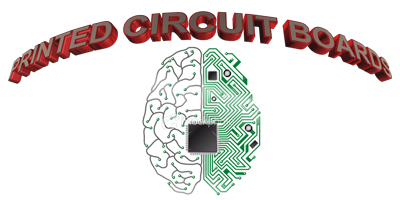
Printed Circuit Boards
Before the invention with the microprocessor, a laptop or computer consisted of several printed circuit boards in a card cage case with elements connected by a backplane, a set of interconnected sockets, in quite old styles the wires were discrete connections between card connector pins, but printed circuit boards quickly became the normal practice, the Central Processing Unit, memory and peripherals had been housed on individual printed circuit boards which were plugged into the backplate, during the late 1980s and 1990s, it became economical to move an escalating quantity of peripheral functions onto the motherboard, in the late 1980s, personal computer motherboards started to include things like single ICs also known as Super I/O chips capable of supporting a set of low speed peripherals, keyboard, mouse, floppy disk drive, serial ports, and parallel ports, by the late 1990s, numerous individual computer system motherboards supported a full range of audio, video, storage, and networking functions without the will need for any expansion cards at all; greater end systems for 3D gaming and pc graphics normally retained only the graphics card as a separate element. Essentially the most well-liked computer systems for example the Apple II and IBM Computer had published schematic diagrams and also other documentation which permitted fast reverse engineering and third party replacement motherboards, typically intended for developing new computer systems compatible together with the exemplars, quite a few motherboards presented more functionality or other characteristics and were employed to upgrade the manufacturer’s original gear.
Today’s motherboards include:
- Sockets or slots in which one or more microprocessors may be installed.
- Slots into which the system’s main memory is to be installed typically in the form of DIMM modules containing DRAM chips
- A chipset which forms an interface between the CPU’s front-side bus, main memory, and peripheral buses
- Non-volatile memory chips usually Flash ROM in modern motherboards containing the system’s firmware or BIOS
- A clock generator which produces the system clock signal to synchronize the various components
- Slots for expansion cards the interface to the system via the buses supported by the chipset
- Power connectors, which receive electrical power from the computer power supply and distribute it to the CPU
Motherboards Temperature and Reliability
Motherboards are generally air cooled with heat sinks often mounted on larger chips, such as the North bridge, in modern motherboards, insufficient or improper cooling can cause damage to the internal components of the computer, or cause it to crash, passive cooling, or a single fan mounted on the power supply, was sufficient for many desktop computer CPU’s until the late 1990s; since then, most have required CPU fans mounted on their heat sinks, due to rising clock speeds and power consumption, computer repair miami beach see here the repairs in most motherboards that have connectors for additional case fans as well, newer motherboards have integrated temperature sensors to detect motherboard and CPU temperatures, and controllable fan connectors which the BIOS or operating system can use to regulate fan speed.